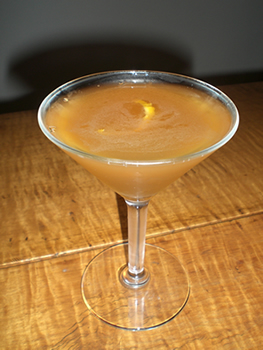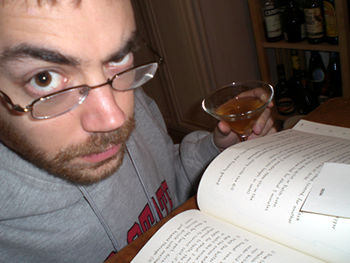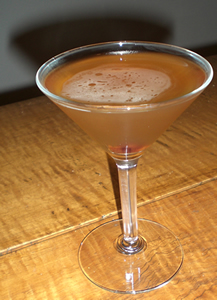Dearest readers, my apologies for abandoning you for so long. I know that all three of you have been wading through posts on spring, squids (scary!) and samosas, tapping your fingers and waiting for the next cocktail. My apologies, but midterms were upon me, and they’re just not conducive to trying new drinks. However, I have a few hours this afternoon where I should be working on homework, and a possible trip to LA is still a few hours off, which really provides a golden opportunity. I’ve been wondering if I could try something with that dusty bottle of green chartreuse, and stumbled upon the Bijou Cocktail.
1 oz gin
1/2 oz sweet vermouth
1/2 oz green chartreuse
1 (or 2) dash(es) of orange bitters
Stir over ice and strain into a cocktail glass then garnish with an olive and lemon peel.
That’s right, I said an olive. You’ll see recipes that call for a cherry, which was far less brain-bending to my mind, but this drink is all about the olive. Because, my friends, the Bijou Cocktail is a strange and delightful journey. The chartreuse is certainly present, as is the vermouth, as is the citrus, as is the olive. It’s like you invited one friend from each of your very different social circles, and now their all hanging out in your mouth having a delightful time.
Green Chartreuse is one of those things I’ve had around for years, and I’m always happy to find an excuse to use it. If you have some in your cabinet, then this is worth giving a shot. It’s certainly not something I’d have two of in one sitting, but I’ll be returning to it again soon. The only ingredient I didn’t taste in this was the gin, although I used Plymouth. I’m quite curious to try it again with something a little more aggressive, perhaps Junipero.
UPDATE: The Junipero was, in fact, a terrible idea. Plymouth gin is delightful, as is Beefeater. Christy finds the drink interesting as well, although probably wouldn’t make it through a whole one.







